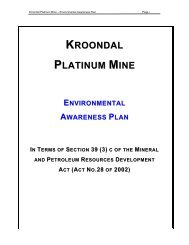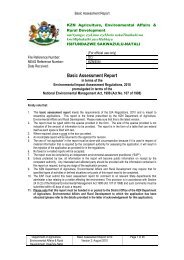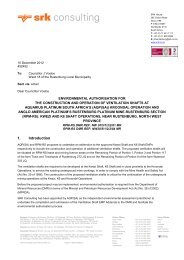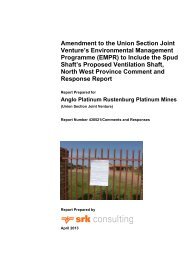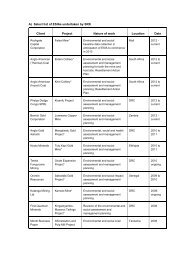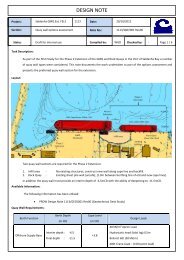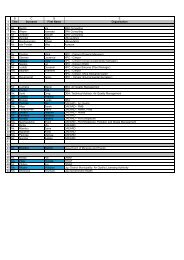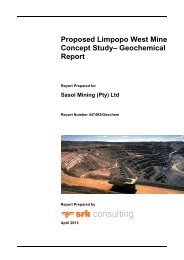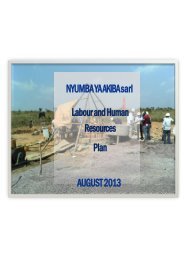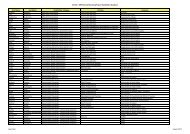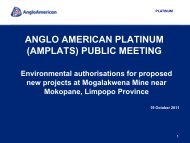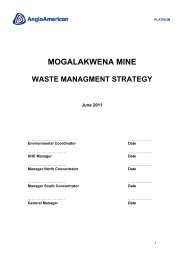Biodiversity (1 - SRK Consulting
Biodiversity (1 - SRK Consulting
Biodiversity (1 - SRK Consulting
Create successful ePaper yourself
Turn your PDF publications into a flip-book with our unique Google optimized e-Paper software.
Psammophis<br />
notostictus<br />
Karoo Whip or<br />
Sand Snake<br />
huge boulders in<br />
the first rays of the<br />
sun and inside an<br />
old tyre.<br />
Sight record Under man-made<br />
rupiculous habitat<br />
10.5 Discussion<br />
Despite the site visit being conducted in mid-winter, when many poikilothermic<br />
herpetofauna are inactive, 6 species were observed. The diurnal western rock skink was<br />
found in fair numbers on and under natural and man-made rupiculous habitat. Quite a<br />
few Anchieta’s agamas were found on boulders on the south side at the foot of<br />
Windhoekberg where they were basking in the first rays of the sun. A single specimen<br />
was also found inside an old tyre. A single giant ground gecko specimen was caught<br />
under a corrugated iron sheet plate. A single Bibron’s tubercled gecko specimen was<br />
caught under a wooden panel near disused workers accommodation. A single Karoo<br />
Whip or Sand Snake was found under a wooden panel near disused workers<br />
accommodation. A few very fast-moving Namaqua sand lizards were observed in the<br />
sand dunes.<br />
All the species listed in Table 2 should be abundant on the study site and elsewhere in<br />
its range.<br />
The study site is situated in an area of habitat transitions - the northern edge in South<br />
Africa of the Nama-Karoo and Bushmanland habitat, the western edge of the Kalahari<br />
savanna, the southern edge of the Gariep River drainage and the eastern edge of<br />
Namaqualand. Three of the four habitats for herpetofauna occur on the study site. Three<br />
Red Data species may possibly be found on the study site.<br />
The habitats considered most sensitive on the farm are the red dunes and areas of deep<br />
sand, the mountains and their gravel skirts, and the Koa River washes and pans. This<br />
leaves the open grassy plains, with shallow soils of mixed gravels and sands, as the<br />
least sensitive and most widespread habitat on the farm and surrounding areas. It is<br />
126



